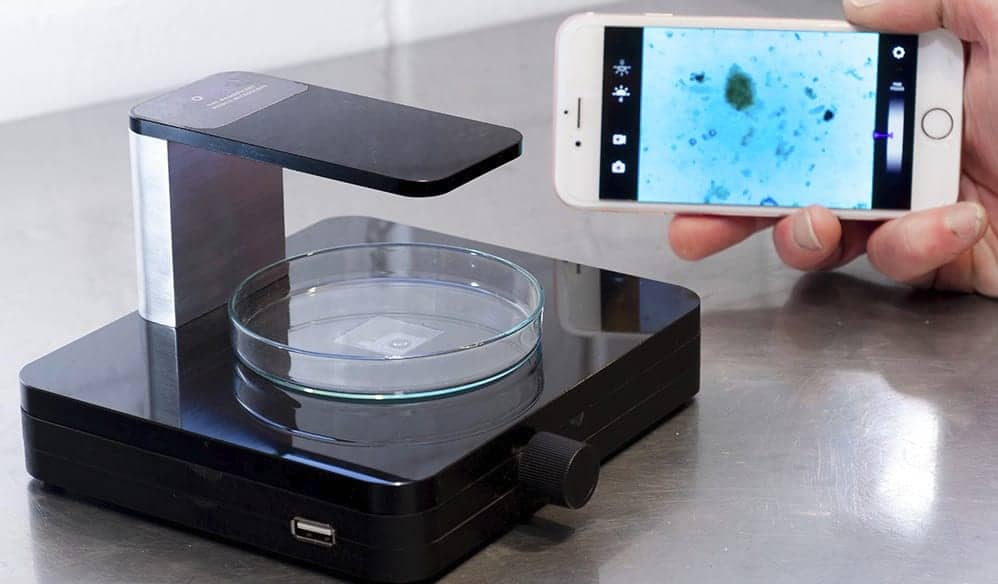The creator of the world’s first high-resolution portable microscope has introduced a compact, inverted microscope that can be used in laboratory incubators. The new digital instrument from IoLight, Whitchurch, UK, offers a unique method for observing cell cultures.
“Using the knowledge and skills gained from creating our pioneering portable microscope, we have developed a very compact, lightweight, and robust inverted microscope that is even tough enough for use inside an incubator,” says Andrew Monk, founder of IoLight. “The IoLight inverted microscope is just 170 mm and sealed to protect the inner workings. This means it is perfectly suited to observing cell culture in a lab incubator without having to open the door.”
The inverted microscope enables monitoring of cell development, with the lens underneath the petri dish looking up into the sample and illuminators both above and below the sample. Because the inverted microscope accommodates a petri dish, observation of cells and organisms can be achieved by standard laboratory procedures rather than by preparing a slide sample.
Technicians can use a Wi-Fi connection to store images from the inverted microscope on a tablet, mobile phone, or laptop, so that they can be shared instantly with collaborators anywhere.
The IoLight inverted microscope uses both bright field and dark field illumination. Bright field mode illuminates high-contrast samples from above, displaying them against a bright background. Dark field mode illuminates lower contrast or even transparent samples with scattered light, highlighting them against a dark background. Access to both modes enables technicians to image a wide range of samples.
The ‘first batch’ of inverted microscopes has been shipped to universities in the United States and the United Kingdom, where they are being used to research and examine algae and other subjects, Monk says. “Customers really like the ability to view images on a mobile phone, and because it is wireless, users can leave the microscope inside an incubator so they do not have to disrupt the experimental conditions.”
For more information visit IoLight.







